Blog
Rapid Restoration DKI
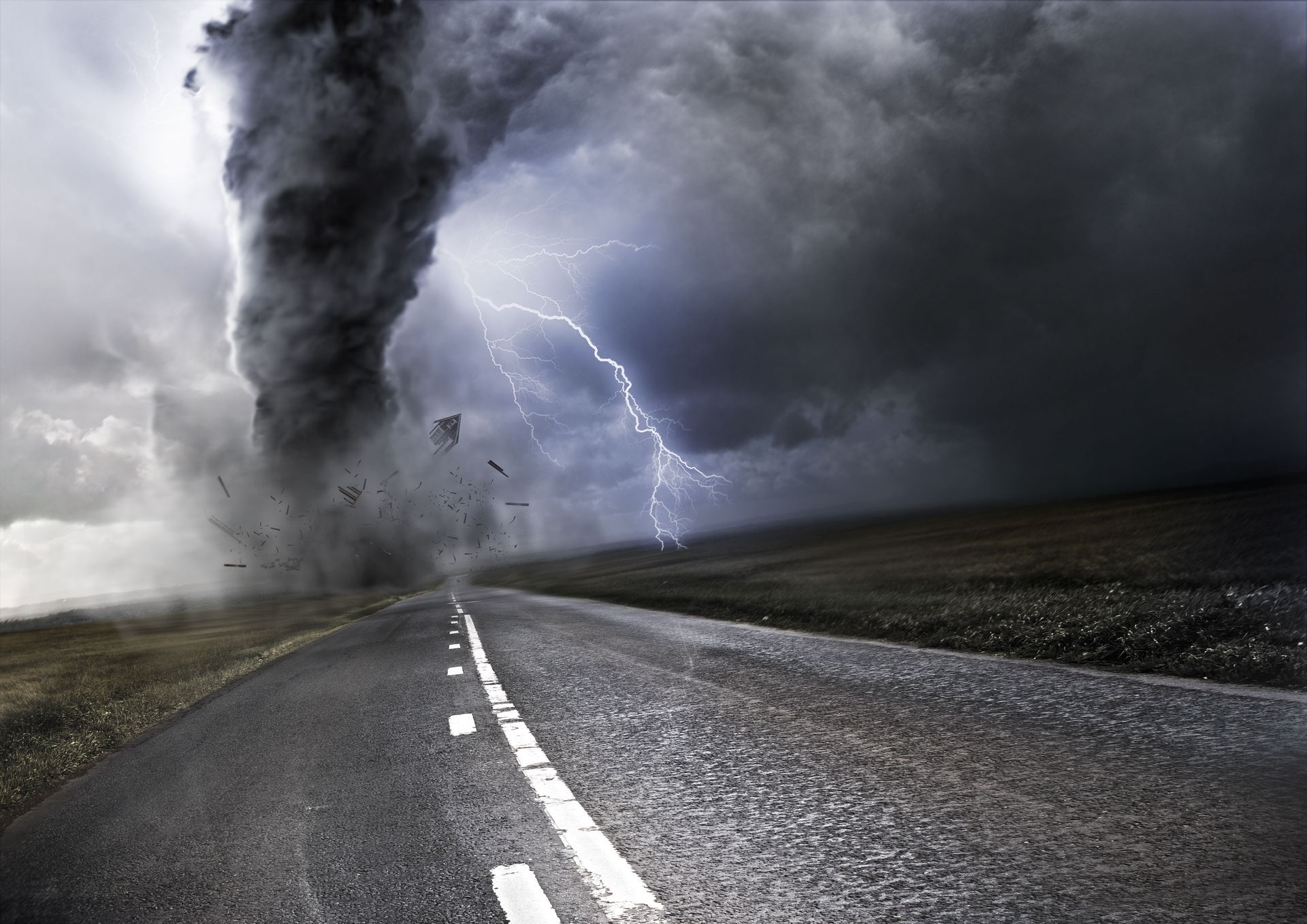
August 7, 2025
Natural disasters are unavoidable and often happen when you least expect them. But what you can control is how you recover from these disasters. Homeowner’s insurance brings peace of mind during these emergencies and can help cover your losses when lightning (or another natural disaster) strikes. To help you prepare for those inevitable storms, it’s important to know just exactly what kind of disasters your insurance covers. Keep reading to learn more! Know Your Insurance Homeowner’s insurance protects you financially against covered damages to your home and personal belongings. There are several policy types offered for home insurance. While no policy covers all natural disasters, some will cover more than others. Depending on where you live, certain disaster coverage may not apply, which is why it’s important to find the right policy for your home. Common policies range from HO-1 to HO-8, with HO-1 being the most basic. Do your research, then make the best decision for you! What’s Covered? Before you assume your home is covered, double check your insurance policy or consult your insurance agent to make sure. While every policy has its own add-ons or exclusions, here are some natural disasters many insurance policies cover. Tornadoes & Hurricanes Tornadoes are fairly common in Minnesota and can be extremely destructive. If your home is involved in a tornado, it will likely cause damage to your personal property due to the strong winds, hail, and strong chance of fallen debris. Most homeowner insurance policies will cover you financially for these damages, but depending on where you live, your policy may require separate deductibles for wind or hail. The damages from a tornado can also include floods. Flood damage is not covered under any standard homeowners insurance policies, so purchasing an additional policy would be required to protect your home from these damages. Like tornadoes, damages caused by hurricanes are usually covered. These damages are typically limited to those caused by winds or fallen debris, and not flood damage. Fire If fire causes damage to your home or property, most policies will cover that damage. Restrictions aren’t common in regards to fire, but can be made in areas where wildfires are more likely to occur, or if the fire was set intentionally. This is something to take into account in Minnesota, where wildfires can be common. Extreme Cold Extreme cold isn’t unusual in Minnesota, where winters can be harsh and freezing. If a pipe bursts due to cold weather, the damages that water causes will most likely be protected. Damages from the weight of snow or ice will usually be covered as well. If snowmelt or the pipe bursting results in a flood, the flood damages will not be protected by insurance. Lightning Lightning strikes can cause many types of damage. Fire, explosions, or power surges can all be a result of lightning striking your home. Most homeowner’s insurance will cover these damages, even if the lightning doesn’t strike your home directly. For example, if lightning strikes a tree next to your home and the tree falls causing damage, your insurance will most likely cover it. Volcanoes For many people, this natural disaster doesn’t apply to their property at all. But for those who live in close proximity to a volcano, this is something they have to think about. A volcanic eruption causes ash, dust, and lava flow. Insurance will usually cover damages from these, but may not cover damages from shockwaves or earthquakes without additional policies. What Isn’t Covered? While many natural disasters are covered by your insurance policy, there are a few that aren’t. These natural disasters can be protected by purchasing additional policies, but aren’t included in the basic insurance. These are some natural disasters that won’t be protected. Earthquakes More than half of the states in the U.S. are at risk of earthquakes and the damage they cause. While they aren’t covered in any insurance policy, you can purchase an earthquake specific policy. This may be a good idea if you live close to a fault line. Floods Flooding from rain, burst pipes, or similar problems isn’t covered in your usual basic homeowner’s insurance policy. The cost of additional flood insurance varies based on where you live and how common flooding is in that area.Floods are quite common in Minnesota, so an additional policy would most likely be useful. Coverage costs range from $600 to even more than $1,200 per year. Tsunamis Tsunamis are giant waves that are typically created by an earthquake or volcanic eruption deep in the ocean. These disasters travel inland, damaging homes and various buildings. Flooding is a major result of tsunamis, and like stated above, aren’t covered by insurance. If you live near the coast, consider purchasing additional flooding coverage to protect your property. And, despite what you may think, our local Lake Superior does, in fact, experience its own form of tsunamis (called meteotsunamis ). Rapid Restoration is Here to Help! Each policy is different and coverage varies. While most insurance policies will cover these natural disasters, it’s important to talk to your insurance company to make sure. Find out about your coverage before the disaster strikes so you can be prepared! No matter what the natural disaster is, you have the disaster recovery experts at Rapid Restoration on your side. We offer 24/7 emergency cleanup services so when disasters happen, cleanup is a breeze. Contact us for fast and efficient restoration! We are here to help!
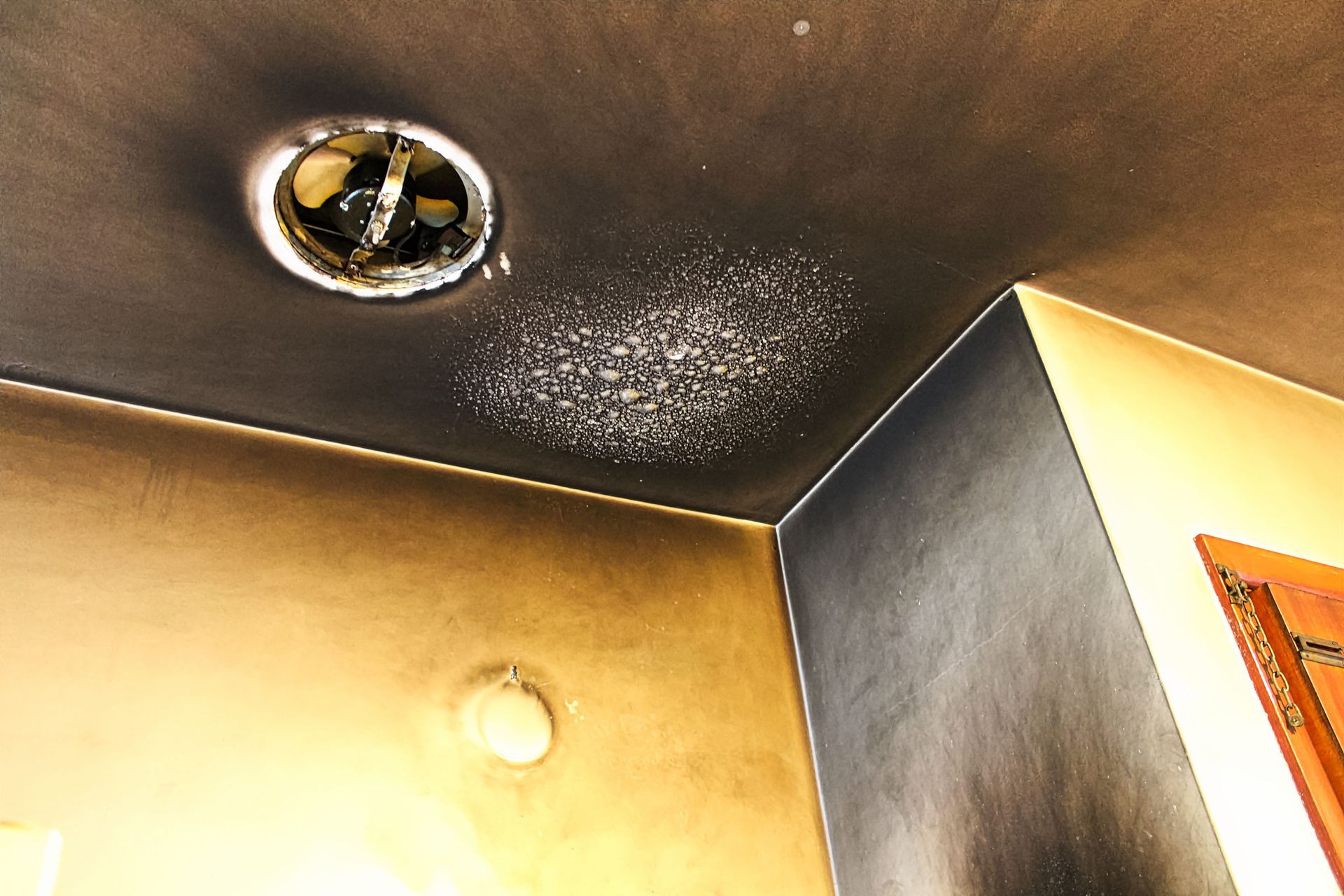
August 7, 2025
Have you experienced a fire at your commercial property? First off, we want to send our sympathies because we know just how precious a business can be to a person’s livelihood. Although fire and smoke damage can be covered by your insurance, it can still be a lengthy process to full recovery. That’s why it’s important to choose skilled professionals that can ease your stress by getting the job done right. We’re here to discuss the steps we take to get your business property back to normal! Let’s start learning. Assess The Damage Knowing what kind of fire you are dealing with will better understand how to clean the damage. There are two different types of fires: High Oxygen Low Oxygen A high oxygen fire leaves behind a dryer smoke residue making the cleanup easier. While a low oxygen fire tends to leave behind a wetter smoke residue which can make the cleanup a little harder. Depending on which fire occurred, professionals can assess the situation and use the proper methods to clean. Get Rid of the Unsalvageable Items Although smoke damage professionals try to save anything and everything possible in the property, sometimes the damage is too severe to save certain items. When this happens, hauling out the unsalvageable items is the next step. By doing so, a smoother and more organized cleanup can take place. This saves time to focus on what can be saved and a considerable amount of smoke odor from the property. We urge owners of the commercial property to take pictures of everything inside the home before we haul things off for insurance purposes. Remove the Leftover Water When firemen fight the fire with the water hoses, the water can also create damage to the property. It’s important to act quickly to remove any water that’s still standing to eliminate any further damage done. To ensure the safety of individuals, professionals will use proper equipment like dehumidifiers to remove the water. If not extracted quickly enough, some common damages of water are: Mold and mildew Warped and damaged wood Electrical damage Carpet damage Ceiling damage When you call Rapid Restoration, we will: Extract water and dehumidify your property Deodorize water damage Remove the Soot Soot is the black powdery or flakey substance left behind after a fire. It’s caused when the carbon-filled materials such as plastic, wood, coal, and oils burn incompletely leaving behind that black substance. Not only can it cause damage to your things and property but it can also cause damage to your health so it’s important to remove it as quickly as possible! Some of the specialized ways to clean soot are: Air scrubbing Thermal fogging Degreasing agents Hepa Vacuum cleaner High- and low-alkaline detergents Professional Deodorization Smoke odor lingering in your home after a fire is very common. However, it shouldn’t stay that way. To remove smoke odor, we have a professional deodorization method to ensure that your house will be smoke odor-free. Enlist Rapid Restoration in this process for skilled and proper smoke odor removal. Call Rapid Restoration for Your Commercial Smoke Damage Needs Getting your business property restored can be a lengthy process. If you’ve experienced a fire at your commercial property, trust our professionals at Rapid Restoration to get the job done safely and professionally! Give us a call today to learn more about our process. Call Rapid Restoration
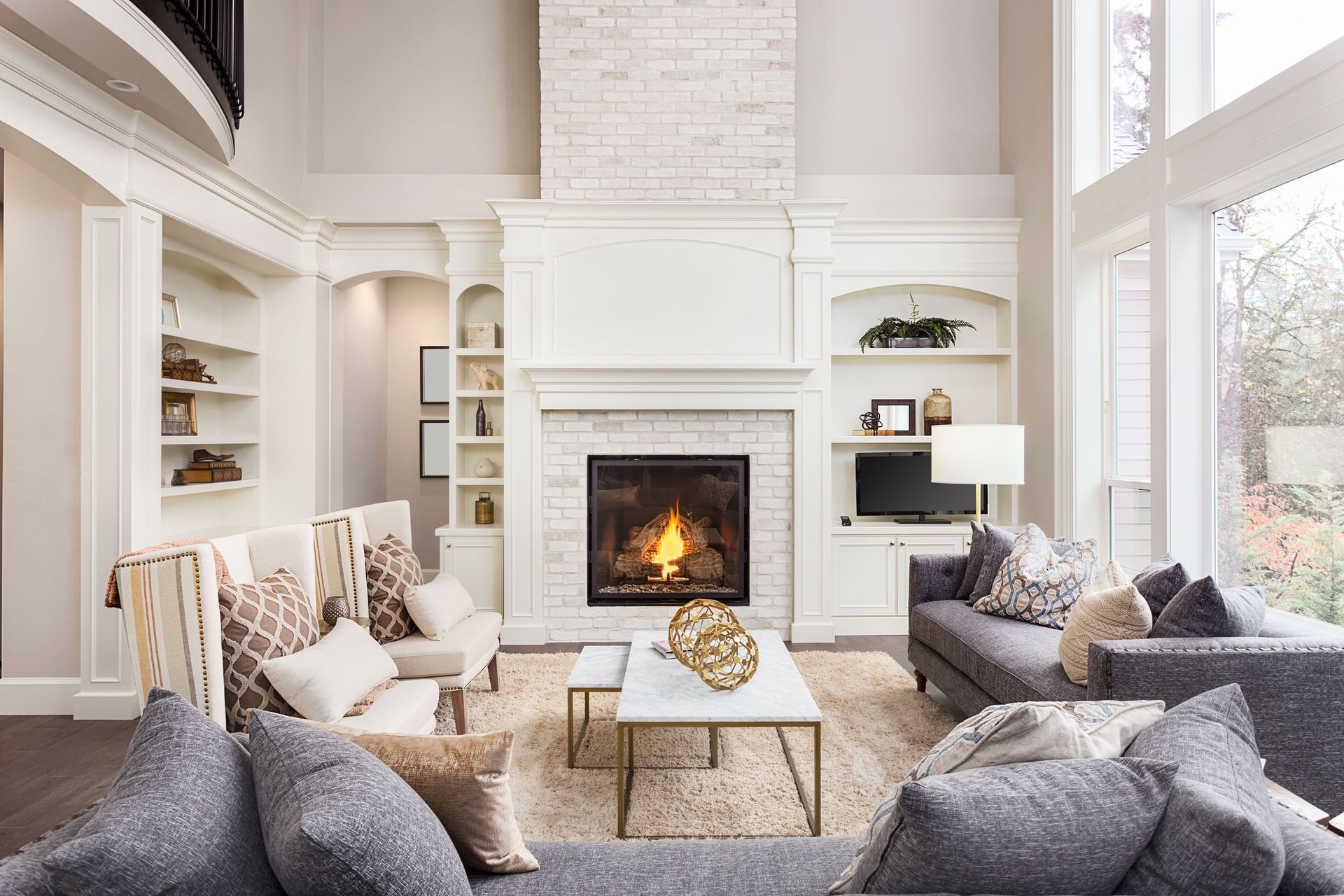
August 7, 2025
We all know about that stack of papers on the kitchen counter that we try to ignore but somehow keep adding to every time we check the mail! Don’t let your clutter control your life and make the changes to keep your home neat and tidy. Why Is It Important to Declutter? According to ABC News , people who live in a cluttered environment tend to have increased stress, unhealthier eating habits, and decreased focus and productivity. There are other harmful things that could be affecting your health if you have too much clutter in your home. Mold likes to grow in dark and wet places, and those places are easier to hide from sight if you have a messy room. Water damage can also be a problem if you can’t see the signs of a leaking pipe or ceiling. 7 Steps of How to Declutter Your Home! The task can seem intimidating at first, especially if it’s been a few months or a few years since you’ve deep cleaned your home. There’s no need to be scared, though! We have some useful tips that will help you clean up and organize your home! Step 1: Determine Which Rooms Need Decluttering! Take a walk through your home and assess each room. Some rooms may be cleaner than others so start with the cleaner rooms first. This will help you get in the habit and practice of how to declutter so you’ll be prepared for the messier rooms! Make sure you set small goals and try not to get too overwhelmed! Make a plan and stick to it! Keep in mind, decluttering doesn’t have to be done in one day. Span it over a week or even a few months. Step 2: Develop a Sorting System A goal without a solid plan won’t get you very far! That’s why it’s a good idea to have a way to sort through everything! That way you know exactly what you need to keep and what needs to be left behind. It’s a good idea to sort things into a keep pile, a store pile, and a toss pile. Don’t get too attached to the things that you’ll be tossing or else it will be counterproductive to the end goal! When you’re sorting through your stuff, try and only keep the things that you’ve used in the past 3 months and see yourself using in the next 3 months. This gives a good time-frame for you to determine how often you use the item and will help you live a more minimalist lifestyle. Step 3: Keep the Essentials Organized The things that you do choose to keep should be organized so that your room looks cleaner. Every person will have their preference for what kind of organizing system they want to use but several things might be helpful to everyone. Some of these things include using: Old shoe boxes or small plastic containers. Used to organize smaller items like charging cords or socks in drawers. Labels. A great way to find things kept in drawers or cabinets. Filing folders or cabinets. Have paper? These are useful for coupons, letter, and papers you can’t throw out. Small garbage cans. Put on in every room to encourage you and others to take care of trash immediately rather than leaving it around the house. Step 4: Store the Necessities If you have things you need to keep but don’t necessarily follow the 90/90 rule, you’ll want to organize those into storage. If you have extra space in your home, make sure you designate that closet or extra room to storage. If you don’t have enough room, you might want to consider investing in waterproof containers to keep things in a storage facility. Use plastic bins to keep things safe from any hazards that may occur like water damage or flooding in the event of an emergency. Filing cabinets are also useful to keep important documents in that you’ll need to keep for years to come so that they are out of the way but easy to find. Step 5: Get Rid of the Rest! Make sure you discard anything that you don’t or won’t need to use! Like we mentioned before, clutter can affect your health in negative ways but it’s important to discard of it. If you have papers, plastic, glass or metal that can be recycled, take it to your local recycling plant! Anything that can be donated to thrift stores or charity can help the communities you live in and if you want to make some extra money, then you can try having a garage sale. If you still have leftover clutter, it’s best to get rid of it! Rent a dumpster or go to the dump to get rid of the rest of your mess! Step 6: Deep Clean The last step to decluttering your home is deep cleaning. Make sure you get into every nook and cranny! This will help you keep on the lookout for hazards like mold or water damage that may have formed behind the mess! Mold can be extremely harmful if not taken care of properly and almost always starts growing as the result of water damage. Step 7: Call Rapid Restoration It may be confusing to know what to do if you happen to find mold or water damage in your home. Make sure you call the experts in charge of helping you clean up these hazards because they’ll know how to best fix the problem! Rapid Restoration does professional mold testing and inspection to make sure your like-new clean home is safe and sound! Want to Learn More? We’ve covered a variety of similar topics and the impact of mold in your home. Take our quiz to see if your home is making you sick. Learn more about the risks of black mold . Find out how to eliminate and remove mold from your home.
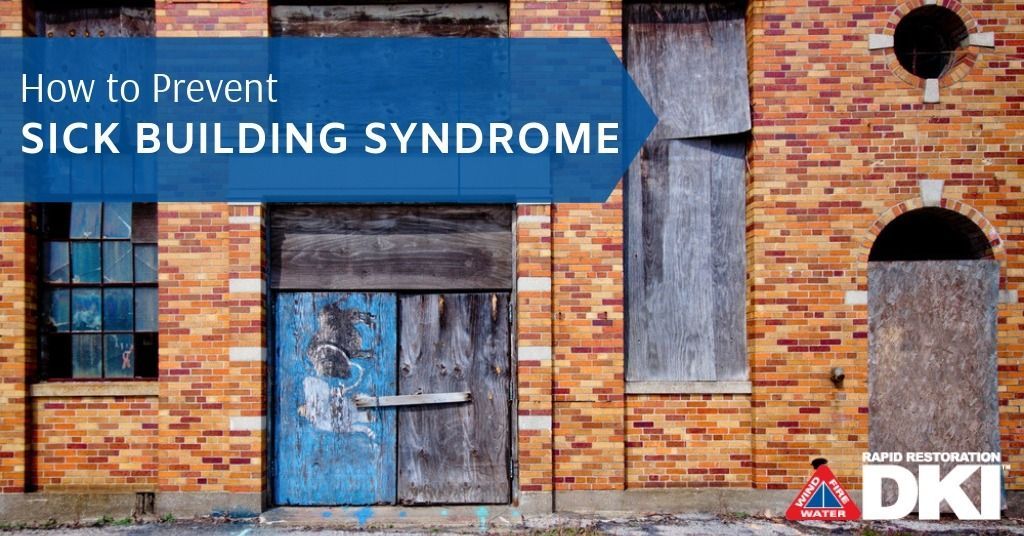
August 7, 2025
Is your home making you sick? It could be. If you’re suffering from constant cold or flu-like symptoms seemingly only at work or at home, you could be at risk of sick building syndrome. Sick building syndrome is when mold, bacteria, or other conditions are making occupants of that building sick with symptoms that only stop when you leave the building. Learn more about the signs of sick building syndrome is and what you can do to prevent it. What Are the Symptoms of Sick Building Syndrome? Not to be confused with the common cold, sick building syndrome can create a number of symptoms, including: Runny or stuffy nose Nosebleeds Sore throat Shortness of breath Tightness in chest Sneezing Fever or chills Dry, itchy skin Headaches Dizziness Irritability An inability to focus Nausea What makes sick building syndrome different from the common cold is that these symptoms keep coming back. If you find these problems disappear when you leave your home for a few days or even hours but come back full force when you return, that’s a sign something in your home is making you sick. Here are six ways you can prevent it and keep you and your family healthy. 1. Keep Dust Away If your home is prone to dust and clutter, keep it clean! A quick dusting goes a long way in preventing cold symptoms, as dust often leads to mold, which can lead to sick building syndrome. Regularly dusting can also help anyone in your home who suffers from allergies or asthma. Quick tip: Make sure the vacuum you use has a HEPA filter to help keep allergies at bay. 2. Change Your Air Filter If you have a filter connected to your furnace, make sure to change the filter every few months to keep your indoor air quality high and keep your furnace working longer. You may need to change this filter more often if you have pets or your house is more prone to dust. If you can’t remember the last time you changed it, it’s probably time! Your lungs will thank you for it.
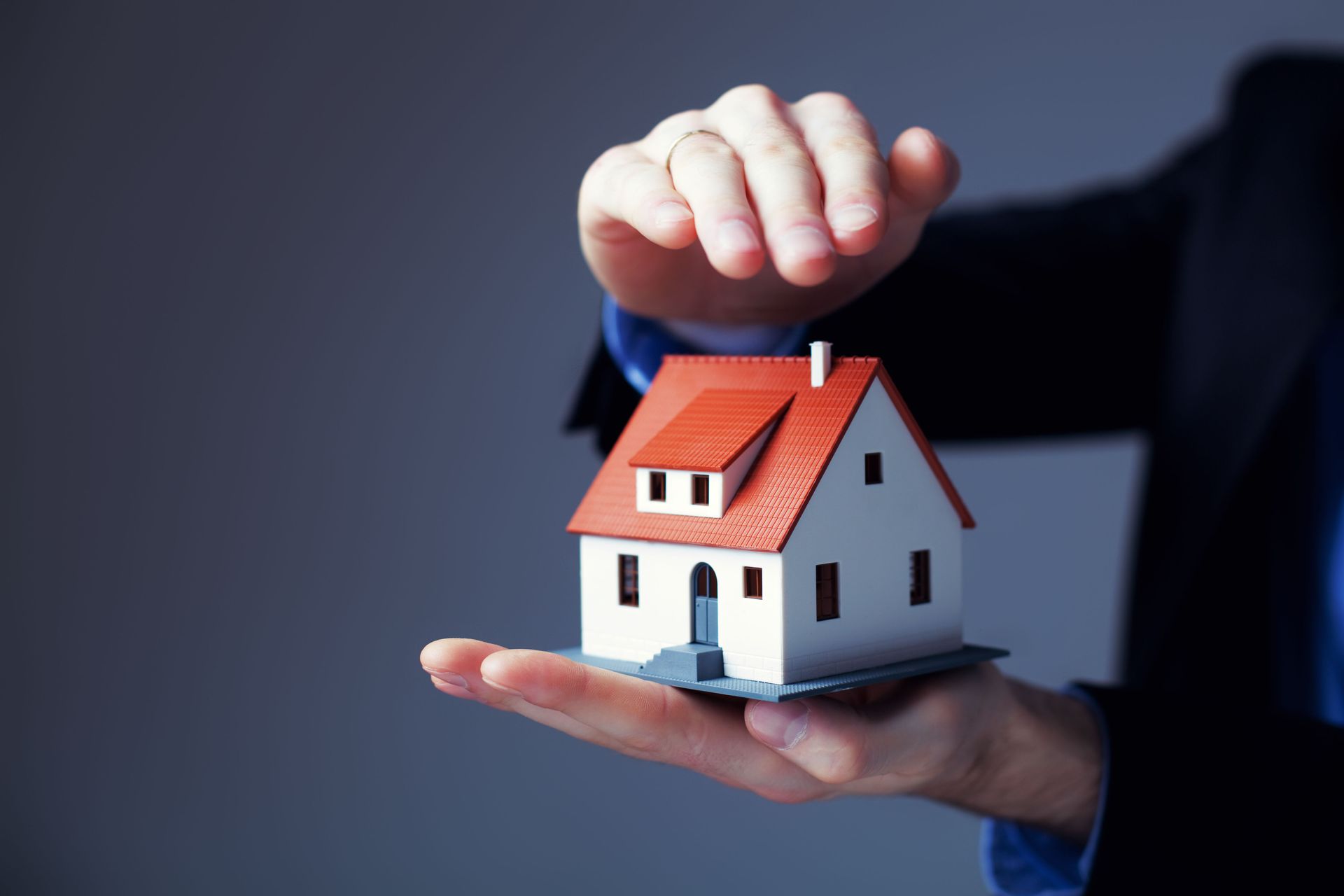
August 7, 2025
If you’re one of the 5.6 million people who live in Minnesota, you already know what a great place it is to call home. With an abundance of natural beauty and an affordable rate of living, it’s no surprise that you’ve decided to settle down in the North Star State. If you’re ready to take the next step and purchase your own property, it’s important to know the ins and outs of your local home insurance suppliers . Having the right policy will help you recover faster following a natural disaster or other types of unexpected loss related to your property, and in most cases, homeowners’ insurance is required by mortgage lenders as a condition of the loan. Read on for a breakdown of some of the top home insurance companies in Minnesota. Home Insurance in Minnesota: Consider the Weather On average, Minnesota residents pay about $1700 per year for their home insurance policies. This number is a bit higher than the national average, possibly due to Minnesota’s trademark winter conditions. No matter what area of the state you live in, it’s a good idea to consider the typical weather before choosing a policy. Many Minnesota homeowners like to choose options that provide extra coverage for snow, sleet, and other cold-weather hazards . While summers in Minnesota are generally mild, the warmer months have been known to bring summer storms and flooding that can also damage your home. PURE As a member of PURE, you don’t pay whatever the market will bear. Instead, your premiums are simply based on your risk factors. They are constantly working to keep members safe, smart, and resilient. In some cases, they even invest alongside members after claims to install technology that will prevent the loss from reoccurring. At Rapid Restoration, we are a preferred contractor for PURE, as we love working with them to help restore any damage done to your home. State Farm State Farm is one of the industry leaders when it comes to home insurance—the company boasts a market majority share. While their most popular plans tend to be in the realm of auto insurance, State Farm also offers home insurance packages that can be customized to suit your needs. Coverage can include personal property, injury liability, your dwelling, and even other structures on your property like a barn or shed. Discounts While State Farm is one of the more expensive options on this list, that cost can be offset by one of the multiple discounts the company extends to its clients. Common discounts include: Multiple lines: If you get both your home and auto insurance from State Farm, you may qualify for a bundle discount. Safety bonus: The installation of common safety measures like smoke, theft, and fire alarms can also get you a percentage of your payment. Think of it as a safe driver discount for your home. Auto-Owners Don’t let the name fool you: Auto-Owners offers home insurance in more than 20 states. For customers who are on a budget, Auto-Owners provides solid policies at a relatively low cost. The price point doesn’t indicate a dip in quality, however: Credit rating agency AM Best gave Auto-Owners a score of A++ for financial strength. You can choose to cover what’s in your home as well as the structure itself, with options available for collectibles, jewelry, and other valuables. Discounts To get even more bang for your buck, Auto-Owners offers several discounts on their home insurance plans. Like State Farm, you may be able to shave a few dollars off the total if you’ve already outfitted your home with anti-theft and fire alarms. They also offer a ‘green’ discount, allowing you to save money while doing your part to protect the environment. North Star Mutual North Star Mutual is based in Minnesota, so its coverage options tend to be better suited for residents. Their agents may also be more familiar with the ins and outs of homeownership in Minnesota since they live and work in the state. While North Star Mutual isn’t a particularly large organization, that doesn’t negate the quality of their coverage. The company allows you to customize your package , with coverage options available for risks like identity theft, recreational vehicle liability, and more. You can even ensure valuables like furs, fine art pieces, and jewelry. Allstate Allstate is another popular insurance company, and for good reason. While their premiums tend to be a bit higher than the Minnesota average, their high score from J.D. Power along with comprehensive home insurance policies may be well worth it. Standard plans can include dwelling coverage, personal property coverage, liability protection, and even guest medical expenses. You also have the option to insure valuables like engagement rings. Discounts While their costs may run you a bit more, Allstate also offers some competitive discounts. Bundling your home and auto insurance may be able to save you as much as twenty-five percent of your total. You may also be able to save ten percent just by switching your pre-existing policy. Allstate may also lower your rates when you install home protection devices or if you recently bought a home. Chubb Chubb is the world’s largest publicly traded P&C insurance company and the leading commercial lines insurer in the United States. They are a diverse group of agents, working to do what is best for you and your family. They offer a 24-hour turnaround in response to claims, once approved, they can issue payment within 48 hours. Chubb will also arrange for a suitable hotel or find a similar type of home if you need a place to stay during repairs. Discounts Chubb’s Masterpiece homeowners policy offers features not found in most policies from other insurers, along with benefits targeting owners of expensive homes. In some cases, Chubb will cover home values others won’t. Discounts for home insurance include burglar alarm, renovated home, suburban rating, and more. Cincinnati Cincinnati insurance is in the business of helping people when disaster strikes. They’re a local insurance company, located in Fairfield, Ohio. Because of this, they have created strong relationships with their communities and are dedicated to helping residents of Ohio recover financially after a disaster hits their homes. Cincinnati’s products are offered exclusively through a select group of premier independent agencies. As a member of your community, independent agents take the time to understand what matters most to you and to apply their expertise to identify risks and customize insurance policies to meet your needs. West Bend For more than 125 years, West Bend has been providing valuable insurance coverages and services to home and auto owners, as well as business owners. West Bend is a relationship-based company with core values that emphasize excellence, integrity, and responsibility. With West Bend insurance, you’re protecting your home with a guaranteed replacement cost and blanket coverage. Discounts Home and Highway simply offers more protection for your home. Many coverages are automatically included; others you can purchase for a modest additional premium, including: Protector Plus : Protector Plus bundles four coverages at a preferred price which is more economical than purchasing them separately. Protector Grand : Protector Grand provides still more protection for your home for a nominal additional premium. Western Mutal Western Mutal is another popular insurance because they understand that your home is a big investment. Their homeowners’ insurance policies can give you the peace of mind you want, and the reliable coverage you need. When something unexpected happens, such as water damage, fires, or theft, you can expect them to protect you and your home. Discounts Western Mutal does offer additional discounts for those who have a local monitored home security system on their homes and if install a qualified wi-fi water device for an annual premium discount of 10% – 15% where applicable. If your home has been damaged in a natural disaster or accident, you can rely on Rapid Restoration to revitalize your property and renew your peace of mind. Our team is available 24/7, so we can be there when you need us most. For more information on our home restoration services and insurance coverage for repairs, please call 612-239-7411 or visit our contact page . For emergency service, you can call us at 612-239-7411 after all immediate concerns (ie. fires) have been professionally taken care of by first responders.
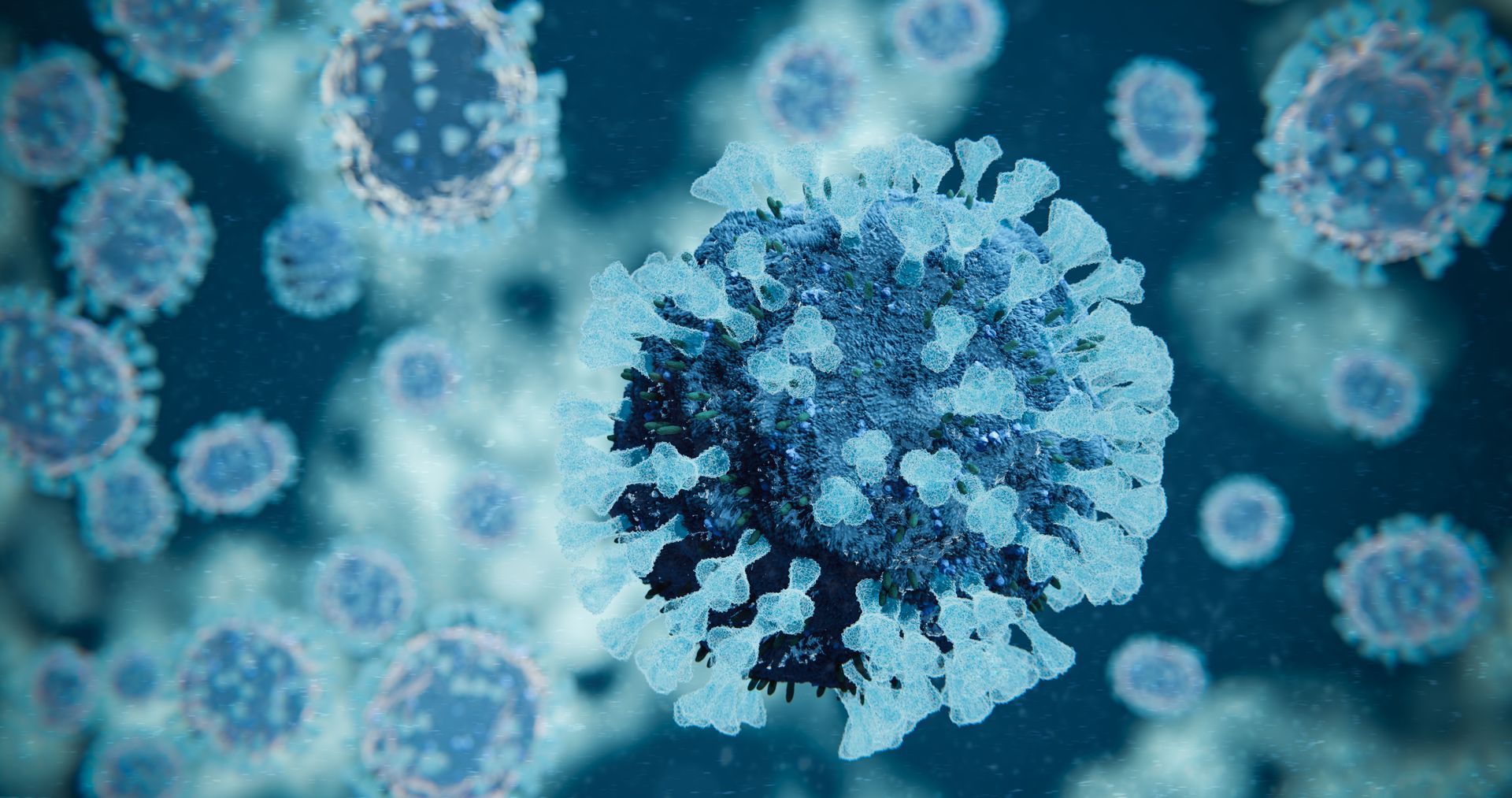
August 7, 2025
Many people confuse disinfectants and sanitizers. After all, we use them both while cleaning, and sometimes we just use one rather than the other. Yet, do you know what the difference is? To help you understand, check out these two definitions: Sanitizer: A chemical that reduces the number of disease-causing bacteria on an inanimate object and kills 99.999% of bacteria. Disinfectant: A chemical that frees hard-surface, inanimate objects from infection by destroying certain types of microorganisms. However, disinfectants don’t kill all microorganisms (such as those with bacterial spores). Now that you know the basic definitions of disinfectant and sanitizer , let’s dig deeper into how disinfectants and sanitizers kill microorganisms. Where Do We Use Sanitizers and Disinfectants? Sanitizers Sanitizers are used in places that come in contact with food. Kitchen counter tops Flatware, glasses, and other dishes Food preparation equipment Utensils Pots, pans, baking sheets Low-temperature dishwashers Disinfectants Disinfectants are typically not applied to surfaces that come in contact with food. Floors, walls, and ceilings Toilets, showers, and bathtubs Chairs and bed frames Kitchen and bathroom Sinks What Do Sanitizers and Disinfectants Kill? Sanitizers Kill… Sanitizers kill bacteria that can cause foodborne illnesses, like Salmonella typhimurium Staphylococcus aureus E. coli Disinfectants Kill… Unlike sanitizers, disinfectant labels must tell you which microorganisms the product kills and has been tested against. Generally, disinfectants are used to combat Bacteria Fungi Viruses Disinfectants are not used to kill bacterial spores, which are bacteria that has grown an outer shell. To kill bacterial spores, a sterilant needs to be used. A sterilant can kill all microorganisms, but it isn’t readily available in your local store as it isn’t a cleaning product. It’s only sold by medical supply houses. Does Contact Time Matter When Applying Sanitizers and Disinfectants? Absolutely! You can’t just spray the chemical and wipe it away the very next second. You must be patient. As the Center for Disease Control and Prevention points out, the duration of exposure can have a big impact on the effectiveness of sanitizers and disinfectants. They say that longer contact times are more effective than shorter contact times. How long should that contact time be? Sanitizers should be left on the surfaces they’re sprayed on for at least one minute in order to be fully effective. Certain items like dishwashing machines may require more time. For disinfectants, always check the label in order to know how long the chemical should be left on the surface. Normally, you should let disinfectants sit for ten minutes before wiping them away. Check Out Our Infographic to Help You Remember! Need Professional Sanitization Services? At Rapid Restoration, we understand how crucial it is to restore the health of your home or business. That’s why we offer sanitization services to help combat against viruses: Large-scale room/building surface and air decontamination via Antimicrobial ULV Fogging. Large-scale surface decontamination via Antimicrobial Spray Application. Targeted area-specific or large-scale surface decontamination via Antimicrobial Wipe-down. With COVID-19 pandemic affecting the entire world, keeping your living and workspace virus-free is an integral part of keeping the people you care about safe and healthy. Disinfectants and sanitizers will help, but professional sanitization can help ease the concern.
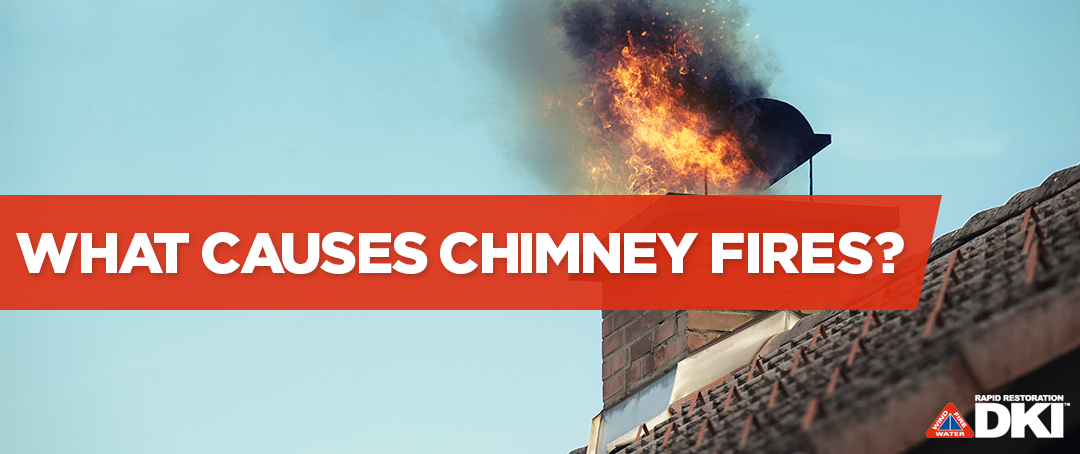
August 7, 2025
If you are currently experiencing a fire, please call 911 immediately. Rapid Restoration does not service live fire situations. However, we will aid in the post-fire cleanup and restoration process. As fall and winter approach you might want to warm up the house with a lovely fire! Before you do, it’s important that you take the proper precautions to prevent any dangerous fires that could damage your home. Common Causes of Chimney Fires Didn’t know your chimney could catch fire? It might seem ironic, but unwanted chimney fires are actually very common! They can also cause a lot of damage if left unchecked! Here are the most common ways a fire might start in your chimney.

August 7, 2025
When your home is damaged by natural events, we know it can make you frustrated, sad, and stressed. And the insurance process can only add to that stress. What does your insurance policy cover? What isn’t covered? If your home is damaged, how much should you actually pay? These questions can be overwhelming and leave you wondering where to start. Here’s a brief overview of what’s covered (and what’s not) under the most basic homeowner’s insurance policy to give you an idea of how the insurance process works. What Is the Most Common Insurance Policy? While each insurance company is different, the most common homeowner’s insurance policy is the HO-3. The HO-3 policy covers most basic damages to your home, including water damage, fire and smoke damage, and storm damage. This coverage plan covers your home’s structure, your personal belongings and liability in the event of damage or injury. Typically, an HO-3 policy will also cover additional living expenses and protection for other structures on your property What Does the HO-3 Policy Cover? Generally, this coverage can include your heating and cooling systems, along with kitchen appliances, furniture, clothing, and other possessions. Coverage for other buildings on your property, such as a garage, barn, or shed, along with outdoor grills or fireplaces, swing sets, walls, or fences is also included. A swimming pool or other recreational equipment may also be covered, but those higher-risk items may require additional coverage. Water Damage Water damage because of weather or in-home appliances are often covered by the HO-3 policy. It can help cover water damage if the cause is sudden and accidental. This means your insurance covers water damage caused by: Burst pipes Broken water heater or water softener Leaky HVAC system Leaky roof from heavy rains What Water Damage Isn’t Covered? The HO-3 policy won’t cover the cost of repairs if your home was damaged by: Flooding of rivers, lakes, or other bodies of water: Flood insurance is a separate policy. In fact, many areas in Minnesota require homeowners to purchase flood insurance if they live on a floodplain. Something you could have prevented: For example, if you already had a hole in your roof before it started to rain and your home was damaged by the rain, your insurance company would label it as something you could have prevented. Water backup from an outside sewer or drain: Typically, this policy won’t cover outside sewer leakage, but you are able to purchase additional sewer coverage that may help cover damage in that event. Mold Damage Mold is often not covered by your homeowner’s insurance policy unless the mold was caused by water damage from sources listed above. If mold grows in your house and it’s something you could have prevented, your insurance company won’t cover it. Imagine that your basement floods. If mold grows because of the flooded basement it’s covered under the water damage portion of your policy. However, mold growing in your bathroom because it was insufficiently cleaned isn’t covered. Fire and Smoke Damage As long as the fire wasn’t something you could have easily prevented, fire and smoke damage are covered by your policy. Even if your home only sustains smoke damage, and no fire damage,, homeowners insurance will generally cover repair or replacement as needed.This means that your home is covered if your home is damaged by: Grease fires Wildfires Fire pits Electrical fires If a fire burns down your home, insurance would most likely pay for items like damaged furniture, clothing, and other personal property. What Fire Damage Isn’t Covered? Your home isn’t covered when damaged by arson. Because arson is a criminal act, an insurance company has the discretion to withhold coverage. This regulation deters abusive homeowners from setting their homes on fire purposefully. In fact, deliberately setting your home on fire to file a claim on your insurance policy is known as arson insurance fraud. Your insurance company will investigate the fire, and if they determine arson was the cause the damage won’t be covered. Fire damage while your home is vacant isn’t covered either. Insurance companies consider a home vacant if it hasn’t been occupied for over 30 days. However, there is a separate policy available that covers vacant homes if you’re planning on staying away from your home for extended periods of time. Storm Damage Your home is covered in most instances if damaged by a storm. Some of these include: Lightning Windstorm Hail Fallen objects Water Damage
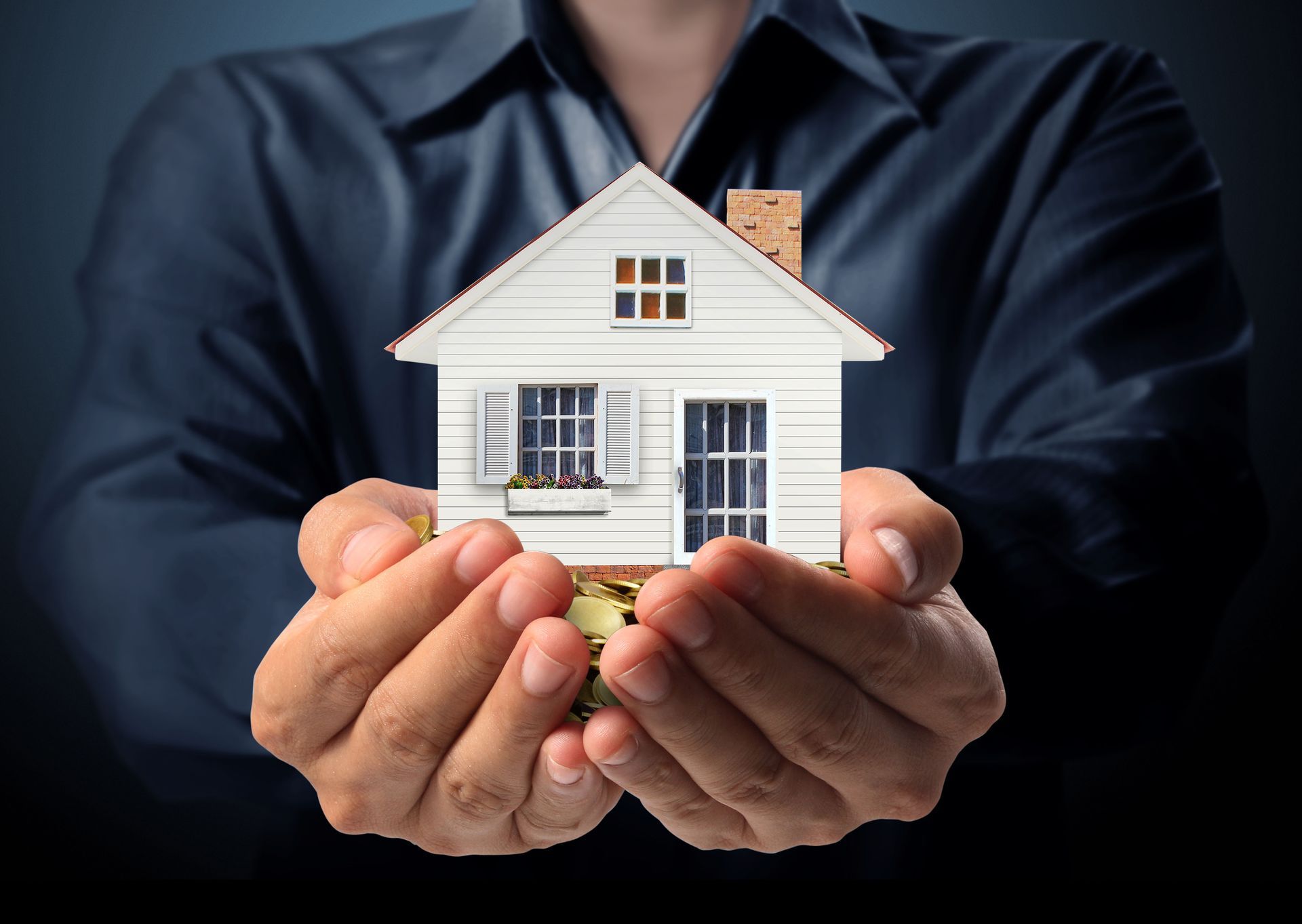
August 7, 2025
Whether you’re looking to buy your very first home and researching your first homeowners insurance policy or hoping to find a better insurance provider than the one you’re currently with, it’s important to compare your options. Here, we’ll take you through a little about what we know about Allstate and State Farm insurances. We don’t have any allegiance to either, and so what we have to say will be completely honest. We’re not going to make the choice for you, but we will provide you with the facts so you can make that big decision for yourself. As insurance providers, Allstate and State Farm have a lot of similarities with some differences here and there. Before we go into the comparisons, check out our Allstate vs State Farm chart: What’s the Difference Between Their Standard Policies Allstate is known for having a decent standard policy that covers fire and smoke damage, theft, vandalism, weather damage, and even pool damage. It also includes personal property coverage and guest medical coverage. Mold is also covered if it’s the result of a water damage and only if it was reported immediately. Roof leaks are also covered but not if it is the result of neglect. Termite damage is also considered to be the result of negligence, and so it’s not covered on the standard policy. State Farm’s standard policy seems to cover more things overall than Allstate. Like Allstate, it covers water damage, fire damage, theft, vandalism, certain water damage situations, personal property protection and liability coverage. However, it does also include loss-of-use coverage which pays for temporary lodging and dining should the homeowner need to be displaced for repairs. Most restorative services are covered at least partially by most standard policies. For example, Rapid Restoration will work with you and your insurance company to make the necessary repairs. Some of the services we offer that would most likely be covered in a standard Allstate or State Farm insurance policy include Pipe Bursts Mold Damage Fire Damage Storm Damage What are Some of the Separate Policies Available? Allstate and State Farm may offer similar policies that can be added onto an insurer’s plan, but they may also have some different policies that may interest you based on your lifestyle. With Allstate, some of their additional policies pertain to water backup, business property, sports equipment, yard and garden, and musical instrument coverage. On the other hand, State Farm offers separate policies for flood damage, earthquake coverage, water backup, sump pump overflow, fraud loss, and coverage for jewelry and collectibles. When picking out your insurance provider, make sure to evaluate your lifestyle. Are you a musician with valuable instruments you wouldn’t be able to easily replace in the case of a disaster? If so, Allstate may be your best pick. If your house comes with a sump pump or if you live in an earthquake prone area, then looking at State Farm might do you well. A Word from Rapid Restoration As restoration professionals who see many homes damaged by harsh weather, burst pipes, and many other reasons, we can tell you that it’s very important to have a good home insurance policy. It can save you time, money, and stress. No matter who your insurance provider is, Rapid Restoration will be here for you the moment you experience any form of damage to your home. If you find yourself in need of our services and curious about how to go about working with your current insurance company, click the following button. The Insurance Process You can also compare Allstate and State Farm insurance companies yourself by visiting their individual websites. Allstate State Farm
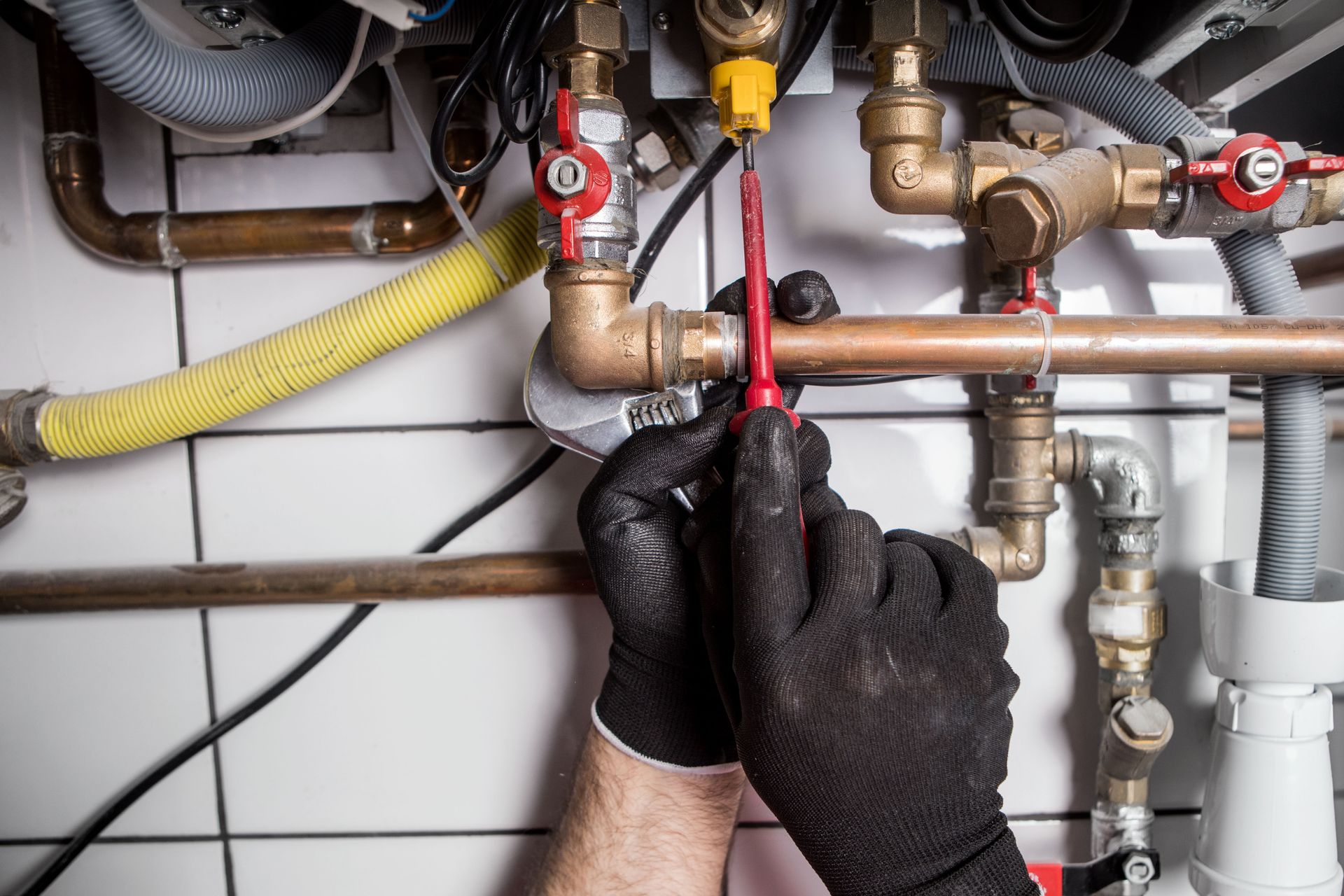
August 7, 2025
Discovering a gas leak in your home can be something both frightening and incredibly frustrating. No one wants to find that gas has been leaking in your home for both health and sanitary reasons. At Rapid Restoration, we want you to be prepared to handle gas leaks of all types, no matter how they occur. We have also included a downloadable quick guide to handling gas leaks, which we encourage you to print and hang somewhere easily referenced within your home. What’s the Danger? The simple answer is that gas leaks are highly flammable. Natural gas contains high amounts of methane, which is very flammable. In the event of a gas leak it is imperative that you don’t create any sparks or fire near the leak as it could cause the gas to explode. Besides explosions, gas leaks can also have effects on the body. If you are only exposed to low levels of natural gas, you will not experience any effects. The only risk to your health from natural gas is if it’s inhaled in large amounts. If a natural gas leak has occurred and is severe, oxygen can be reduced, causing dizziness, fatigue, nausea, headache, and irregular breathing. If you or your family members are experiencing any of these symptoms, but can’t smell anything, you should still check for a leak and call a plumber to fix it. Determining if You Have a Gas Leak The main type of gas leak that you will encounter is a natural gas leak. Natural gas is used for heating furnaces, water heaters, space heaters, pool and jacuzzi heaters, fireplaces, outdoor lights, clothes dryers, air conditioners, and stoves. Any of these can leak, so what’s the easiest way to tell if you’ve had a natural gas leak in your home? It Stinks You’ve probably heard that natural gas tends to smell like rotten eggs. This is because the gas companies add the smell as a warning. Rotten eggs is the most common smell, but it can also smell similar to skunk. Either way, the smell is generally bad and you can usually trace it back to the source. What Causes A Gas Leak? Gas leaks can be caused by a few things. Like we said above, natural gas is used in a few different places within your home and can leak from any of them. So if you come across the smell of rotten eggs or skunk, you’ve probably got a leak. With that being said, most gas leaks happen at the source of the gas to your home. Gas leaks typically occur more often in older homes. This is because older homes used a different style of gas valve, called a lube valve or plug valve, which is no longer allowed in homes, and won’t pass inspection. Before you move into a new place, check if it uses this type of valve. If it does, consider getting it replaced. If one of your appliances has leaked, it might be because the appliance is old and broken. To avoid this, you should get your home inspected every few years. Appliances’ gas supply valves can also be poorly fitted which allows gas to escape. You should have it fitted properly by a professional to ensure leaks don’t happen. What To Do If You Have a Gas Leak If it has just started, determine where the leak originated. Ensure there are no sources of heat or flames near the leak. Open windows and doors to allow the gas to escape. Exit the building. Call a professional to fix the leak
